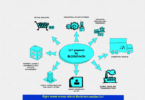Blockchain, the distributed ledger technology that underlies bitcoin transactions, has been heralded as a transformative technology that is as significant as the development of the internet. The enthusiasm for blockchain technology over the last two years has little to do with bitcoin itself. Rather, the distributed ledger technology the blockchain utilizes has myriad potential powerful applications that could fundamentally change the financial services industry as well as any industry relying on the use and sharing of data.
According to an August 2016 study by the World Economic Forum, over $1.3 billion was invested in blockchain technology over the past three years, with more than 90 companies joining blockchain consortia seeking to develop useful applications. In late September 2016, congressional representatives unveiled the bipartisan Congressional Blockchain Caucus to “educate, engage, and provide research to help policymakers implement smart regulatory approaches to the issues raised by blockchain-based technologies and networks.” Rep. Mick Mulvaney, R-S.C., who helped launch the caucus, has been selected by President Donald Trump to serve as the director of the Office of Management and Budget. We expect 2017 to be a watershed year in terms of both blockchain development and how regulators address this technology.
Distributed Ledgers: The Basic Concept Behind Blockchains
The key to blockchain technology is the concept of distributed ledgers. In traditional centralized ledger systems, a single trusted party controls the master database that records all processed transactions. These hubs also serve as a trusted third party through which two unrelated parties can safely exchange items of value. While centralized systems provide key benefits, they lack transparency, add an additional layer of transaction costs and are only as safe as the security of that central database.
With blockchains, distributed ledgers provide the same benefits as a trusted third party, but in a far more efficient and secure manner. In a blockchain, every network user has its own verified copy of the ledger. Through cryptography, distributed consensus networks and other algorithms, each new transaction is verified across the network and then added to the block. Each ledger is updated simultaneously, creating an immutable record. The security of these systems is virtually guaranteed by the fact that a hacker would have to infiltrate more than half the nodes on the network — a virtually impossible task and, in any event, likely cost-prohibitive. Since each transaction is verified by the network, blockchain users can transact directly with each other, eliminating the transaction costs of a central hub. To date, blockchains are divided between those that are “private” or “permissioned” and those that are “public.” In a private blockchain, participation is controlled (e.g., a group of banks that agree to use a blockchain for interbank transactions), while a public blockchain has no limitations on participation.
Blockchain technology could be applied to any system that has historically relied on a central trusted authority for functions such as payment transfers, clearing and settlement. Indeed, blockchains could fundamentally reshape the entire architecture of the financial system. Moreover, since the essence of blockchain technology is to allow for quicker, more efficient and more reliable data exchanges, the blockchain could revolutionize any industry that relies on data. Common examples are the recording and management of chain of title or equity ownership, or the protection and dissemination of personal information. Since any asset can be represented by data, blockchain proponents see new paradigms for the licensing and distribution of intellectual property content, supply chain management and the recording of corporate shares. For example, through its Blockchain Initiative, the state of Delaware is promoting blockchain-based corporate shares. While the state government has acknowledged that multiple regulators would have to join that effort, the state’s goal is to clear the legal path to make the initiative viable.
The Regulatory Environment
Since blockchain technology is still evolving in the financial services sector, no meaningful regulation has yet been issued. Nonetheless, regulators are watching this space closely, hoping to avoid a situation in which they are reactive to technology that has already been implemented. In 2016, the U.S. Federal Reserve, the People’s Bank of China, the Bank of England and the Central Bank of Russia all issued pronouncements about the importance of this technology and its potential impact. For example, Federal Reserve Chair Janet Yellen, testifying at a congressional hearing in September 2016, stated that “[blockchains] could have very significant implications for the payments system and the conduct of business,” and that “innovation using these technologies could be extremely helpful and bring benefits to society.” The U.K.’s Financial Control Authority “regulatory sandbox,” which was established in 2014 to create a “safe space” in which businesses could test innovative technology products and services in a live environment while ensuring that consumers are appropriately protected, has placed great emphasis on blockchain solutions.
Regulators also must evolve with the introduction of this new technology. The Securities and Exchange Commission (SEC) has established a blockchain working group that is considering, in part, the need for the commission to have stronger technology expertise to address issues as they arise. More generally, the SEC has focused on gathering information about blockchain technology and how it could impact transfer agents, for example. In 2017, the SEC likely will make more definitive pronouncements on blockchain adoption.
The concept of blockchain regulation is anathema to many proponents of the technology who believe its transparency and decentralization eliminate the need for regulation. Blockchain systems ultimately may lower compliance costs by allowing regulators to take advantage of the transparency of the system and access data directly, but regulators likely will not allow time- and battle-tested systems such as payments, clearing and settlement to be replaced wholesale without some degree of regulatory oversight. Notwithstanding the strong focus on blockchains within the financial services sector, the looming possibility of regulation may result in blockchain systems being implemented in nonregulated contexts first, such as in a supply chain system.
Smart Contracts
Blockchains are rarely discussed without mention of “smart contracts.” The concept behind smart contracts is that machine code would replace or, more likely, supplement legal contracts so the terms of a contract would be executed automatically. For example, the system would be able to verify that a party satisfied its performance obligations and then transfer the applicable consideration from the counterparty. Of course, the numerous subtleties of complex commercial agreements do not lend themselves to being expressed in objective computer code. Nonetheless, many standardized agreements, especially those that are entered into repeatedly within an industry, might be amenable to legally binding code-based solutions. For example, a smart contract in the mortgage context might track and automatically release a lien when a mortgage is fully paid. The concept of smart contracts should advance significantly in the coming year, with regulators — particularly in the financial services space — paying particular attention to the intersection of smart contracts and blockchains and whether they might permit users to circumvent long-established regulatory requirements.
The Road Ahead
While blockchain technology is in its nascent stage, technologists expect it will evolve and be adopted at a much faster rate than other information technologies. Their optimism is based on the fact that distributed, interconnected computers — which are the essence of blockchain technology — are already well accepted and understood, and almost every potential user already has multiple devices connected to the network.
That said, a number of hurdles remain before blockchain technology can be widely adopted. Some have expressed concern that the technology has become fragmented without a coherent direction, which creates confusion in the marketplace and could slow adoption. Others question whether blockchains can efficiently handle large transaction volumes. Companies should closely monitor developments and consider how they might benefit from use of the technology.
Source: https://www.skadden.com/insights/blockchains-offer-revolutionary-potential-fintech-and-beyond







